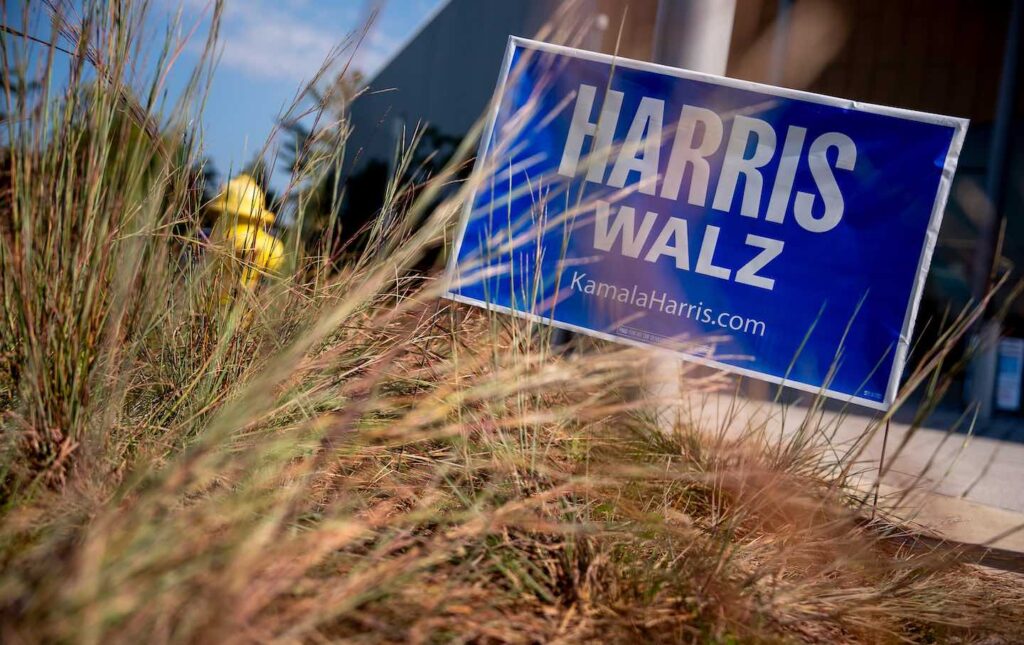Reevaluating Democratic Strategies After a Disappointing Election Cycle
The Democratic Party faces a critical crossroads following a comprehensive analysis of its recent electoral performance, revealing significant shortcomings in its approach and voter engagement.
A Deep Dive into the 2024 Electoral Failures
Recent assessments by political analytics firm Catalist have shed light on the Democratic Party’s underwhelming performance in the 2024 elections. Contrary to expectations, voter turnout remained high-approximately 64% of eligible voters cast ballots-yet the party failed to capitalize on this momentum across key battlegrounds. The analysis indicates that Democratic candidates, including the Harris-Walz ticket, experienced notable declines in support among crucial voter segments, especially among those who previously supported Biden in 2020.
The decline was particularly stark among voters of color. For instance, Latino men’s support for Democratic candidates fell below 50% for the first time in recent history, and gender gaps within minority communities widened, signaling growing disillusionment. Additionally, a record number of approximately 30 million voters who participated in 2020 did not return to the polls in 2024, representing the largest drop-off in the 21st century. Swing voters, often termed “irregular” voters, also shifted away from Democratic candidates, contributing to the Republican victories in pivotal states.
Demographic Shifts and Historical Context
Looking back to 2012, the last time Democrats confidently maintained a broad national coalition, the numbers are even more sobering. Ruy Teixeira, a veteran political analyst, notes that the Democratic advantage among non-college-educated voters of color has been halved-from a 64-point margin in 2012 to just 32 points in 2024. The Hispanic support base, once a Democratic stronghold, has seen its advantage diminish dramatically-from a 38-point lead in 2012 to a mere six points today.
Gender disparities have also worsened. Obama’s support among male voters in 2012 was five points, whereas Harris’s support among men in 2024 has plummeted to a 16-point deficit. This shift underscores a troubling trend: Democrats are losing ground among men, rather than gaining among women, which has historically been a key demographic for the party.
The Cracks in the Democratic Foundation
The comprehensive data confirms what many political observers have long suspected: the Democratic Party’s challenges are not merely about messaging tweaks or targeting new demographics. Instead, the party is grappling with a profound credibility crisis among the American electorate. Key voter groups that once formed the backbone of Democratic victories are defecting in significant numbers, raising questions about the party’s future viability.
While the GOP’s gains in 2024-particularly among young men and Latino and Black voters-may not yet constitute a stable majority, their ability to mobilize low-propensity voters has demonstrated a strategic advantage. Conversely, Democrats have struggled to develop an effective counter-strategy, especially in defending democratic institutions against the rising threat of authoritarianism represented by the MAGA movement. Efforts to combat Trump’s influence through legal prosecutions and public campaigns have largely fallen short, leaving many voters skeptical of Democratic resolve.
The Political Landscape and Future Opportunities
The current electoral landscape underscores the importance of rethinking campaign strategies. Catalist emphasizes that Democrats need to simultaneously persuade high-turnout swing voters and expand their base of less consistent supporters. This dual approach is essential to overcoming the persistent decline in core demographics.
Meanwhile, the Republican Party, under Trump’s leadership, is actively preparing for the 2026 midterms. Its efforts include significant investments in advertising campaigns targeting vulnerable districts and mobilizing low-propensity voters-an approach that has yielded early signs of success. Trump’s team is also preemptively countering potential investigations and impeachment efforts, recognizing that political narratives can shift rapidly and impact voter perceptions.
Challenges in Addressing Economic and Political Inequality
The Democratic Party’s inability to craft a compelling economic populist message remains a significant obstacle. Despite enacting policies that have widened wealth disparities-such as recent tax cuts and immigration reforms-the party has failed to effectively communicate a vision of economic fairness. Historically, successful campaigns like Obama’s 2012 reelection relied on bold economic interventions, such as rescuing the auto industry, which galvanized working-class voters in key states.
Today, figures like Bernie Sanders and Alexandria Ocasio-Cortez continue to rally against economic oligarchy, drawing large crowds in traditionally Republican-leaning areas. However, the party’s establishment remains hesitant to embrace these populist messages fully, fearing alienation of moderate voters. This disconnect hampers efforts to build a unified front capable of addressing income inequality and corporate influence-issues that resonate deeply with a restive electorate.
The Path Forward: Rebuilding Trust and Broadening the Coalition
Ultimately, the Democratic Party’s path to electoral revival hinges on its ability to rebuild trust among diverse voter groups and craft a narrative that resonates with their economic and cultural concerns. This involves not only engaging swing voters but also energizing disillusioned core supporters who have drifted away.
As the political landscape continues to evolve, Democrats must confront their internal divisions and develop strategies that reflect the complex realities of American voters. Only through genuine reform and inclusive messaging can the party hope to reverse its current trajectory and secure a sustainable majority in future elections.
Chris Lehmann is the DC Bureau chief for The Nation and a contributing editor at The Baffler. His work often explores the intersections of politics, economics, and social justice, offering critical insights into the challenges facing American democracy.

